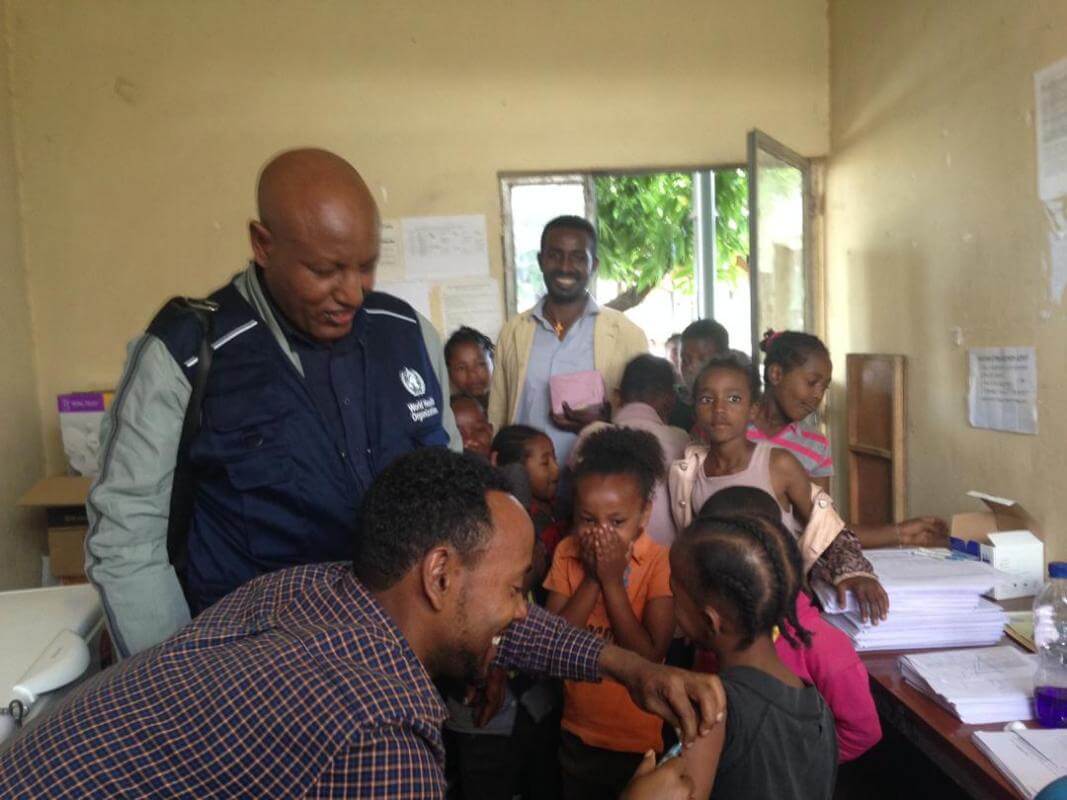
Ethiopia to Vaccinate 20% Population in 2021 – Muluken Yohannes
Ethiopia is planning to vaccinate 20% of its population against the COVID-19 pandemic by the end of 2021, said the country’s top health expert.
Speaking to Anadolu Agency, Muluken Yohannes, a senior adviser to the Health Ministry, said a national coordinating committee and a task force have been set up for the purpose to ensure vaccination.
Further, the country is actively engaged in a unique global alliance representing more than two-thirds of the world, to ensure that developing nations get vaccines equitably in terms both of access and cost.
The alliance includes the World Health Organization (WHO), the Coalition for Epidemic Preparedness Innovations (CEPI), Global Alliance for Vaccines and Immunization (GAVI), the Gates Foundation, and 191 countries to raise financial support for accelerated research and development, production, and globally-equitable access to COVID-19 vaccines. Ethiopia is also part of COVAX AMC, a grouping of 92 low and middle income countries, seeking financial assistance to procure COVID-19 vaccines, accessories and help in delivery.
“Ethiopia has already requested the aid of 16 billion birrs ($ 405 million) from the World Bank. This amount may not be enough because the COVID-19 inoculation plan involved several works to be carried out,” said the adviser.
Africa Exim Bank has already approved $2 billion as a pre-order guarantee to its members to purchase the vaccine.
Muluken said the logistical issues are presenting a bigger challenge.
“We also need an adequate supply of all the accessories and auxiliaries necessary to conduct the vaccination successfully, such as syringes, gloves, sanitizers, and many other inputs,” he added.
Muluken said the national committee and the task force are currently deliberating on the logistical aspect as well as putting together other key components such as creating awareness about the vaccine, crisis management, and framing regulations.
Ethiopia is expecting to import 42 million doses of COVID-19 vaccine soon to begin inoculation from March or April.
Health officials in the country say that inoculating just 20% of the population will not lead to herd immunity and total insulation from the virus. They say total insulation can be achieved only after the vaccination of 60-70% of the population.
The African Union Center for Disease Control (CDC) and Prevention said the plan for Africa was to achieve herd immunity by the end of 2021.
“The next step for us would be to select the manufacturer to buy the vaccine,” he said, adding that financing sources such as local and international donors, multilateral agencies, and the private sector would be further explored.
On Jan. 19, the Africa CDC, through the Africa Medical Supplies Platform (AMSP), announced the commencement of a COVID-19 vaccines pre-order program for all African Union member states.
Earlier on Jan. 14, South Africa’s President Cyril Ramaphosa, who is also serving as chairperson of the African Union announced that the grouping has secured 270 million COVID-19 vaccine doses through the African Vaccine Acquisition Task Team (AVATT).
The African CDC said the African Import-Export Bank will facilitate payments by providing advance procurement commitment guarantees of up to $2 billion to the manufacturers on behalf of member states.
According to the African CDC, the cost of vaccinating 60% of the African population will be as high as $10 billion-$15 billion.
As Ethiopia has opened its schools three months ago, many experts complain that children were not adhering to social distancing measures and other restrictions to keep the virus away.
“There are times when the students get distracted and pull down their masks and talk while close to each other,” said Zemenu Wordofa, a teacher at Misrak Goh secondary school in Addis Ababa.
Over the past six weeks, there has been a surge in the number of new cases while hospital beds including ICUs are reported full.
According to the US-based Johns Hopkins Coronavirus Resource Center, Ethiopia has so far reported 139,408 infections with 2,122 deaths.

